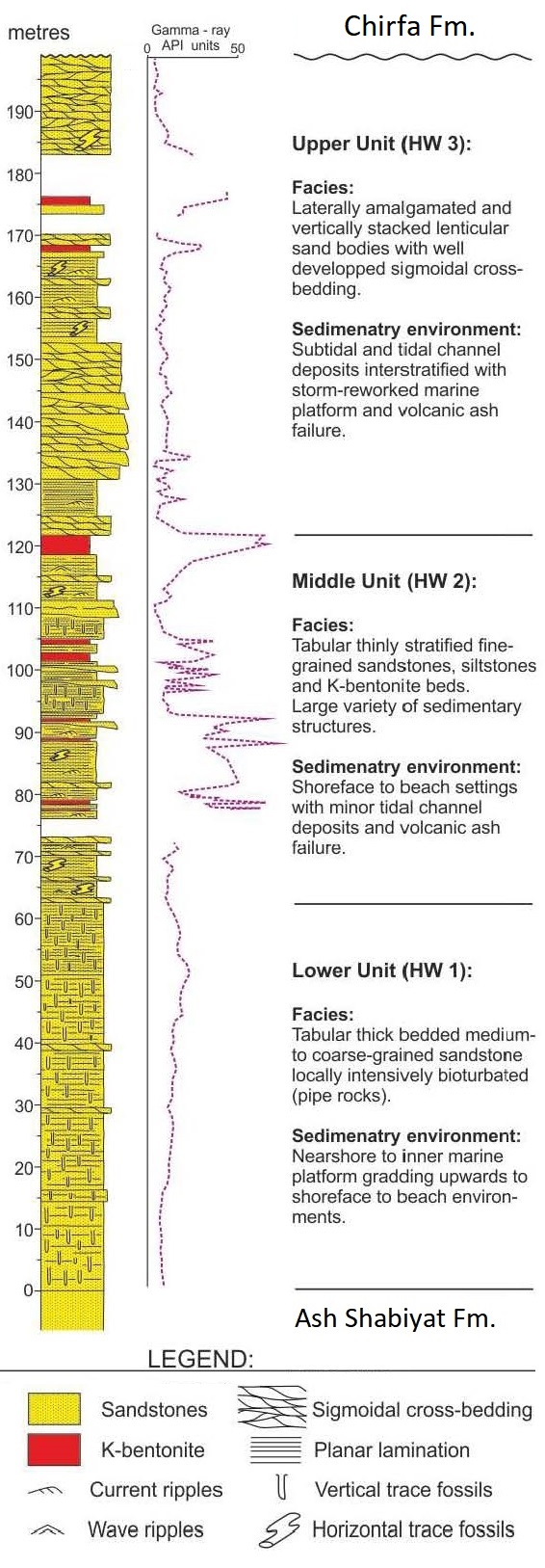Hawaz Fm
Type Locality and Naming
Jabal Hawaz in the western part of Jabal Gargaf (Libya) (Fig. 1). Massa & Collomb, 1960. Group: Gargaf Gr
References: Massa & Collomb, 1960; Jacqué, 1963; Lababidi, 1985; Government of Niger, 1993; Mergl et al., 2001; Denis et al., 2006, 2007a, 2007b, 2010; Shalbak, 2015; Hallet, 2002, 2016.
Synonym: Tigillites sandstone Formation; Tigellites or Tigillites Unit (Government of Niger (1993). The former name of the formation was spelled Haouaz. The spelling was modified to its current form by Hallet (2002) after verifying the official name records of localities in Libya.
Lithology and Thickness
Built-up of fine to medium-grained sandstones. Medium-to-coarse grained sandstone interbedded with silty micaceous, gray, and green shale. 50 to 280 m thick.
[Figure. Stratigraphic column of the Hawaz Fm at the Type Locality (Libya) (Source: Shalbak, 2015). Note: In Libya, the Formation overlying the Hawaz is called Felar-Felar; the equivalent of the Chirfa Fm in the Djado Basin.]
Relationships and Distribution
Lower contact
Underlain by the Ash Shabiyat Fm
Upper contact
Regional extent
GeoJSON
Fossils
Rich in trace fossils Tigillites (Harlania) and Skolithus. Poorly preserved brachiopods and bivalves.
Age
Depositional setting
Shallow marine. This preglacial sandstone shows heavily burrowed trough cross-beds, indicative of a marine shoreface depositional environment. In addition, the excellent sorting and rounding of grains in the Hawaz Fm are consistent with a marine, non-glacial origin.
Additional Information
